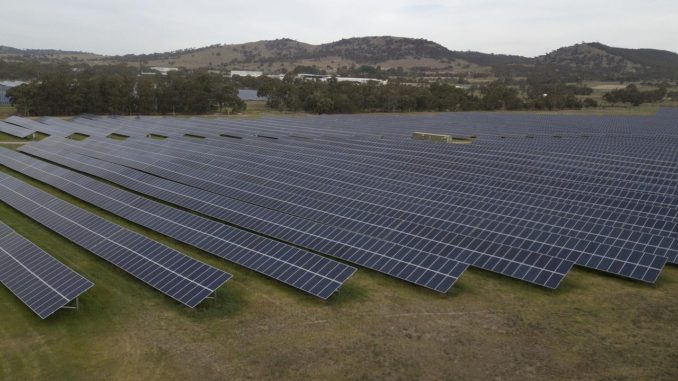
CANBERRA, Australia — Australia’s senior federal government minister Angus Taylor is hailing “breakneck” renewables growth for Australia edging closer to reaching its 2030 reduction target.
A marked rise in renewable energy supply and Covid-curbed transport industry activity has helped to drive down Australia’s annual greenhouse gas emissions to their lowest levels on record.
The National Inventory has tracked the nation’s emissions since 1990 and the March quarterly update shows 499 million tonnes of carbon dioxide were released last year to December.
That represents a five percent or 26.1 million tonnes reduction from the previous 12 months, said the report published late on May 30.
Falling transport activity stemming from coronavirus restrictions reduced emissions from that sector alone by 12.1 percent or 12 million tonnes.

But Taylor said the “breakneck” growth in renewables was the single largest contributor to the reduction.
“When we make commitments, we meet and beat them,” the energy and emissions reduction minister said.
“Emissions are now at their lowest level on record – 20.1 percent below 2005 levels. We’re well on our way to meeting and beating our 2030 target.”
However, unlike countries such as the United States and Japan, Australia, the world’s richest country with the highest per-capita emissions, has declined to establish a more aggressive target for 2030.
Taylor added low emissions technologies would enable Australia to reach its Paris Agreement target, a 26 to 28 percent emissions reduction on 2005 levels.
“Over the last two years, the projected emissions reductions required to achieve that target have fallen by 639 million tonnes – the equivalent of taking all of Australia’s 14.7 million cars off the road for 15 years,” he said.
“Between 2005 and 2019, the last year for which comparable data is available, Australia reduced emissions faster than many similar economies, including Canada, New Zealand, Japan, and the United States.”

Despite a 4.9 percent reduction in emissions due to a fall in coal-fired and gas-fired production, Australia’s largest polluter remained the power sector, accounting for one-third of emissions.
The federal government, however, has copped flak for refusing to follow other nations in committing to reach net-zero emissions by the middle of this century.
Prime Minister Scott Morrison has instead said he wants to hit net zero emissions “as soon as possible” and “preferably” by 2050.
Last month, The Australian government committed AU$600 million ($463 million) for a new gas-fired power station, which skeptics have warned is unnecessary.
Earlier this month, the 2021/22 budget allocated AU$1 billion ($772 million) on measures to lower emissions and AU$58.6 million ($45.2 million) to support an expansion of the gas industry.
(Edited by Vaibhav Vishwanath Pawar and Nikita Nikhil)
The post Senior Minister Hails Australian Renewables For Emissions Fall appeared first on Zenger News.
